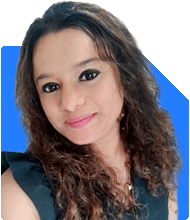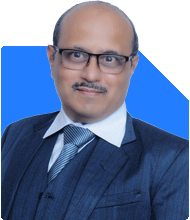27-Year-Old Investing for Retirement: Should I Change My Strategy?
Ramalingam Kalirajan |10906 Answers |Ask -Follow
Mutual Funds, Financial Planning Expert - Answered on Jul 16, 2024
He has an MBA in finance from the University of Madras and is a certified financial planner.
He is the director and chief financial planner at Holistic Investment, a Chennai-based firm that offers financial planning and wealth management advice.... more

I'm 27 years old and married with 1 daughter (age 1 month) and from last 2 year I'm doing sip on 4 equity MF with 14k ( 5 on small cap, 5 midcap, 3 large cap, 1 flexicap), and holding stocks worth 4 lac, now I'm planning to invest more 5k in large & midcap, midcap 3k and small cap 3k, and quarterly 30k on sovereign gold bonds. My investment time frame is 10 year and I want to retire at 40 age. Please suggest me if any changes required or not.
You are investing in equity mutual funds and stocks. Your monthly SIPs total Rs. 14,000. You plan to add Rs. 11,000 more in various mutual funds and Rs. 30,000 quarterly in sovereign gold bonds.
Assessing Your Investment Mix
Your portfolio is well-diversified across small cap, midcap, large cap, and flexicap funds. This diversification balances risk and potential returns.
Adding More Investments
Adding more to large & midcap, midcap, and small cap funds is good. It aligns with your long-term goals. Sovereign gold bonds add stability and diversification.
Retirement Planning
You plan to retire at 40, giving you a 13-year investment horizon. This requires a substantial corpus. Ensure your savings are aggressive yet balanced. Regularly review and adjust your portfolio.
Insurance and Emergency Fund
Ensure you have adequate life and health insurance. This protects your family. Maintain an emergency fund covering 6-12 months of expenses.
Final Insights
Your investment strategy is sound and diversified. Continue with disciplined investments. Regularly review and adjust based on market conditions and goals.
Best Regards,
K. Ramalingam, MBA, CFP,
Chief Financial Planner,
www.holisticinvestment.in
You may like to see similar questions and answers below
Ramalingam Kalirajan |10906 Answers |Ask -Follow
Mutual Funds, Financial Planning Expert - Answered on May 19, 2024
Ramalingam Kalirajan |10906 Answers |Ask -Follow
Mutual Funds, Financial Planning Expert - Answered on Jun 25, 2024
Jinal Mehta | Answer |Ask -Follow
Financial Planner - Answered on Jun 24, 2024
Nitin Narkhede |113 Answers |Ask -Follow
MF, PF Expert - Answered on Oct 11, 2024
Ramalingam Kalirajan |10906 Answers |Ask -Follow
Mutual Funds, Financial Planning Expert - Answered on Dec 19, 2025
Nayagam P P |10859 Answers |Ask -Follow
Career Counsellor - Answered on Dec 19, 2025
Ramalingam Kalirajan |10906 Answers |Ask -Follow
Mutual Funds, Financial Planning Expert - Answered on Dec 19, 2025
Ramalingam Kalirajan |10906 Answers |Ask -Follow
Mutual Funds, Financial Planning Expert - Answered on Dec 19, 2025
Ramalingam Kalirajan |10906 Answers |Ask -Follow
Mutual Funds, Financial Planning Expert - Answered on Dec 19, 2025
Radheshyam Zanwar |6751 Answers |Ask -Follow
MHT-CET, IIT-JEE, NEET-UG Expert - Answered on Dec 19, 2025
Radheshyam Zanwar |6751 Answers |Ask -Follow
MHT-CET, IIT-JEE, NEET-UG Expert - Answered on Dec 19, 2025
Samraat Jadhav |2514 Answers |Ask -Follow
Stock Market Expert - Answered on Dec 18, 2025
Reetika Sharma |432 Answers |Ask -Follow
Financial Planner, MF and Insurance Expert - Answered on Dec 18, 2025
Reetika Sharma |432 Answers |Ask -Follow
Financial Planner, MF and Insurance Expert - Answered on Dec 18, 2025

























